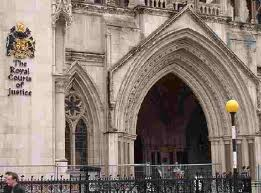Since the Rating Act 1999 the valuation of properties for business rates has assumed a “reasonable state of repair”, regardless of the actual condition of the property. This has meant that properties in a poor state of repair, or even those undergoing refurbishment works, have been assessed as though they were in good repair. This, in turn, has resulted in property owners continuing to pay rates during refurbishment works.
In SJ & J Monk (a firm) v Keith Newbigin (VO) (2014) UKUT 0014 (LC), the Upper Tribunal (Lands Chamber) considered the valuation of offices at Sunderland Enterprise Park. The property had been vacant since 2006 and in March 2010 the owner entered into a contract to carry out various renovation and improvement works, including the removal of all internal elements other than the lift and the staircase enclosure. The works also included construction of new common parts to the first floor and reconfiguration as three new letting units.
The appellant ratepayer contended that the property should be valued in a stripped out condition, following the principle of rebus sic stantibus, because the works being carried out were works of alteration and improvement rather than of repair. The respondent Valuation Officer contended that the property should be valued in a reasonable state of repair as this is an assumption required by Schedule 6 of the Local Government Finance Act 1988 and the intentions of the actual owner are irrelevant.
The Upper Tribunal did not accept the appellant’s distinction between repairs and alterations, saying that there is no statutory basis for such a distinction. However, the Tribunal also did not accept the respondent’s contention that this meant the property must be valued in an assumed reasonable state of repair. Instead, the Tribunal took the view that the hereditament was not capable of beneficial occupation because of its physical condition and that the replacement of major items which had been removed went beyond the meaning of repair. The assessment was reduced to RV £1 with a description of “building undergoing reconstruction”.
The Valuation Office Agency has appealed against this decision to the Court of Appeal but it appears that the Tribunals are now becoming seized of an important point which is that the assumption of a reasonable state of repair is a valuation assumption, not an assumption as to what does, or does not, comprise a hereditament. The definition of hereditament rests in case law and is inextricably bound up with the tests of rateable occupation. The provisions of Schedule 6 of the 1988 Act cannot apply to make something into a hereditament if it is not one.

